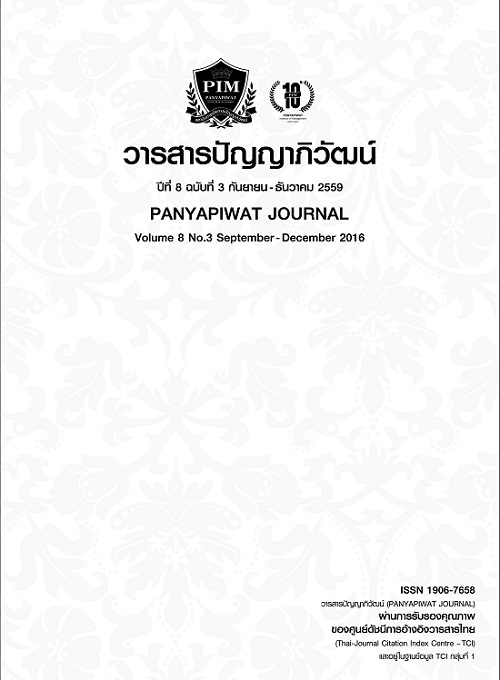THE IMPACT OF COORDINATING CONJUNCTION USE ON THE SENTENCE DEVELOPMENT OF THAI AND KHMER UNIVERSITY STUDENT WRITERS
Main Article Content
Abstract
The intent of this paper is to provide a contrastive analysis of Thai and Cambodian university students’ use of coordinating conjunctions in English narrative writing essays. The narrative writings of 175 students at a university in Bangkok, Thailand were examined and compared to 79 related essays written by students at a University in Battambang, Cambodia. The data was used to explore the application of coordinating conjunctions as sentence extenders and propagators of constructs. The study found that although the Thai study subjects exhibited a higher distribution rate of coordinating conjunction types, the Cambodian study subjects employed coordinating conjunctions at nearly twice the frequency of Thai students resulting in a more than two-fold increase in sentence length and words per paper. The sentence length for the Cambodian subjects was within the recognized standard sentence length (15-20 words) for English academic writing while the average sentence length for the Thai subjects was nearly six words below average.
Article Details
I and co-author(s) certify that articles of this proposal had not yet been published and is not in the process of publication in journals or other published sources. I and co-author accept the rules of the manuscript consideration. Both agree that the editors have the right to consider and make recommendations to the appropriate source. With this rights offering articles that have been published to Panyapiwat Institute of Management. If there is a claim of copyright infringement on the part of the text or graphics that appear in the article. I and co-author(s) agree on sole responsibility.
References
Coordinating conjunctions. (n.d.). In Speakspeak. Retrieved July 1, 2016, from http://www.speakspeak.com/resources/English-grammar-rules/conjunctions
Cutts, M. (2007). Oxford guide to plain English. London: Oxford University Press.
Dubay, W. H. (2007). Smartlanguages: Readers, readability, andthegradingoftext. UK: Book Surge Publishing.
Fry, E. B. (1988). Writeability: The principals of writing for increased comprehension. In B. I. Zakulak & S. J. Samuels (Eds.). Readability: It’s past, present, and future. Newark, DE: International Reading Association.
Garner, B. (2001). Legal writing in plain English. University of Chicago Press.
Gentner, M. T. (2015). TeachingEnglishtoCambodianLearners. Bangkok University Press.
LeGuin, U. (1998). Steering the craft: Exercises and discussions on story writing for the lone navigator or the mutinous crew. Topeka, Ks: Tandem Library.
Markel, M. (2010). Technical communication (9th ed.). Bedford/St. Martin’s.
Provost, G. (1985). 100 ways to improve your writing. New York: Penguin.
Reynolds, B. (2011). The myth of fanboys: Coordination, commas, and college composition classes. TESL Canada Journal, 29(1), 104-112.
Sayah, L. (2013). The role of conjunctions in EFL learners’ narrative development. International Journal of Education and Research, 1(11), 133-146.
Schills, E. & DeHan, P. (1993). Characteristics of sentence length in running text. Literary and Linguistic Journal, 8(1), 20-26.
Sherman, D., Slawson, J., Whitton, N. & Wiemelt, J. (Eds.). (2010). Thelittlebrown handbook(11th ed.). Longman.
Smalley, R. & Hank, R. (1982). Refining composition skills: Rhetoric and grammar for ESL students. New York: Macmillan.
Swan, M. (1997). Practical English usage. London: Oxford University Press.
Word frequency data: A corpus of contemporary American English. (n.d.) In Word frequency data. Retrieved July 1, 2016, from http://www.wordfrequency.info/free.asp?s=y
Yang, J. (2006). Application of conjunction in English teaching. Sino-US English teaching, 3(7), 48-51.


